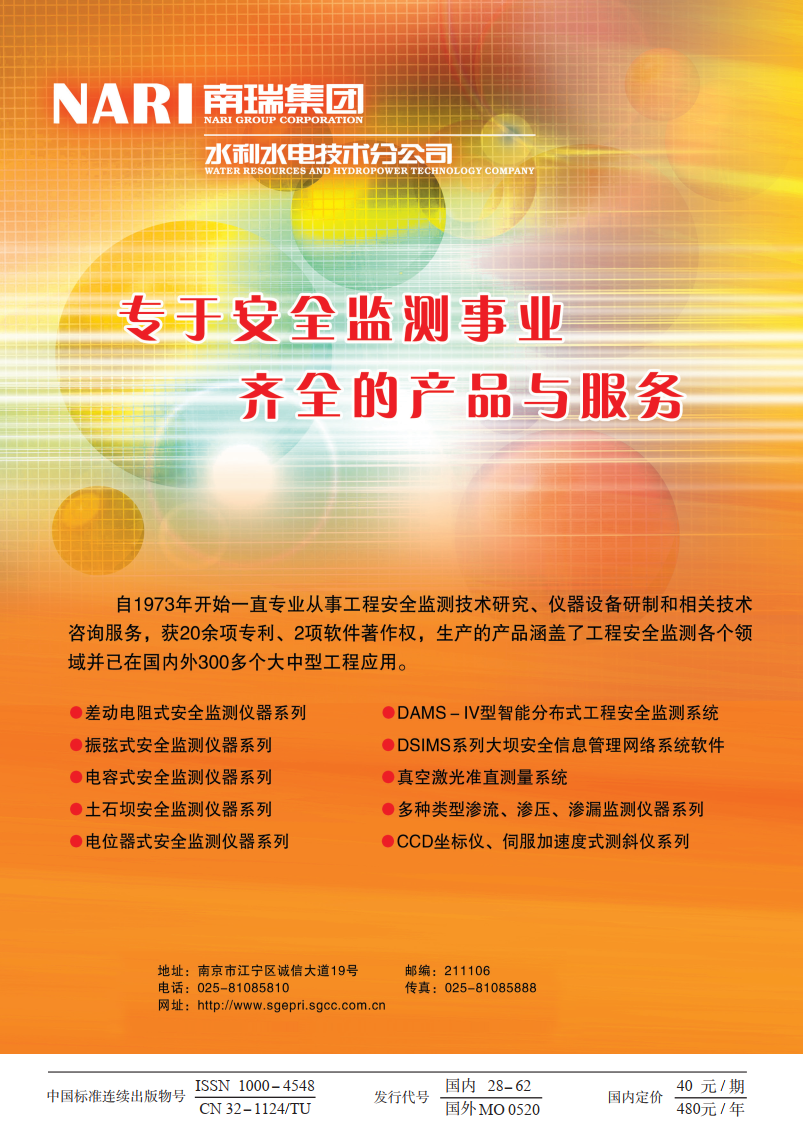基于非线性准则的三维土坡稳定性拟动力分析 English Version
Pseudo-dynamic analysis of three-dimensional soil slope based on nonlinear criterion
-
摘要: 线性强度准则被广泛应用于描述岩土材料的抗剪强度,但研究表明几乎所有岩土材料的强度包络线都具有非线性特性。此外,边坡失稳往往受不利自然因素的影响,特别是地震活动频发的区域。因此,本文基于极限分析上限法,提出了一种非线性强度准则下三维土坡抗震稳定性分析方法,采用多切线法分段逼近幂律强度准则包络线,以考虑土体强度非线性。同时,引入一种新的三维多锥破坏机制来适应非线性幂律准则。采用修正拟动力法对地震荷载进行表征,考虑土体阻尼特性且不违法边坡表面零应力边界条件。根据功-能平衡方程,推导了两种评价边坡稳定性的指标,并结合遗传算法和序列二次规划算法寻找最优解。通过与已有文献比较,验证了所提方法的有效性和准确性。进一步的参数化研究揭示了土体强度非线性、地震作用和土体三维几何特性对边坡稳定性的影响。Abstract: The linear strength criterion is widely used to describe the shear strength of geotechnical materials, but studies have shown that almost all strength envelopes of geotechnical materials have nonlinear characteristics. In addition, slope instability is often influenced by adverse natural factors, especially in areas of frequent seismic activity. Therefore, based on the upper bound method of limit analysis, a seismic stability analysis method of three-dimensional (3D) soil slopes under nonlinear strength criterion is proposed in this paper. The multi-tangent method is used to approximate the envelope of the Power-Law strength criterion to account for the nonlinearity of the soil strength. And a new 3D multi-cone failure mechanism is introduced to describe the nonlinear Power-Law criterion. The modified pseudo-dynamic method is used to characterize the seismic load, which does not violate the zero-boundary condition and considers the damping properties of geomaterials. According to the work- energy balance equation, two measures for evaluating slope stability are derived, and the optimal solution is found by combining genetic algorithm and sequential quadratic programming algorithm. By comparing with the existing literature, the effectiveness and accuracy of the proposed method are verified. Further parametric studies reveal the influence of soil strength nonlinearity, seismic action and 3D geometric characteristics of soil on slope stability.
-
期刊类型引用(19)
1. 杨晓亚,于坤霞,李占斌,李鹏,刘永刚,莫淑红,杨建宏. 秦岭山区-黄土高原地区生态基流区域差异及其阈值研究. 干旱区地理. 2025(03): 380-390 .  百度学术
百度学术
2. 唐逸凡,焦艳梅,刘新原,齐大洪,宋林辉. 地下水位升降过程中的黏土地基孔压变化试验研究. 南京工业大学学报(自然科学版). 2024(01): 103-111 .  百度学术
百度学术
3. 李杰,程龙飞,孙大典,任怡桦,李雙衡. 酸性循环侵蚀下灰岩-土体渗透特性研究. 人民长江. 2024(07): 212-220 .  百度学术
百度学术
4. 郭海,张安银. 基于PCA的长江漫滩软弱黏性土渗透特性研究. 江苏建筑. 2024(04): 102-105 .  百度学术
百度学术
5. 李永威,徐林荣,傅金阳,商拥辉. 列车荷载作用下铁路路基填料渗透破坏机制. 岩土力学. 2024(S1): 299-308 .  百度学术
百度学术
6. 李万双,蔡俊兵,柳雪钊. 软土渗透特性实验研究. 房地产世界. 2023(05): 39-43 .  百度学术
百度学术
7. 邱潇,蒲勇,张亮,李明强. 大渡河中游流域深厚砾石层沉积特征与渗透特性. 人民长江. 2023(05): 156-162 .  百度学术
百度学术
8. 张亮亮,邓刚,陈锐,张茵琪,罗之源. 不连续级配无黏性土渗蚀演变特征研究. 岩土工程学报. 2023(07): 1412-1420 .  本站查看
本站查看
9. 康永闯,朱兴华,刘邦晓,孔静雯,王梦奎. 级配特征和水力梯度对堰塞坝材料渗透特性的影响研究. 西北水电. 2023(04): 30-37 .  百度学术
百度学术
10. 郑刚,王佳琳,佟婧博,张天奇. 天津承压含水层粉土渗透特性试验研究. 天津大学学报(自然科学与工程技术版). 2022(01): 77-84 .  百度学术
百度学术
11. 宋林辉,王兴亚,吴昊宇,周克发,梅国雄. 黏土在不同应力条件下的渗透过程分析. 岩土工程学报. 2022(04): 755-761 .  本站查看
本站查看
12. 刘斯宏,鲁洋,张勇敢,张呈斌,程德虎. 袋装膨胀土组合体渗透特性大型模型试验. 河海大学学报(自然科学版). 2022(06): 101-107 .  百度学术
百度学术
13. 张乐,党发宁,高俊,丁九龙. 线性加载条件下考虑应力历史的饱和黏土一维非线性固结渗透试验研究. 岩土力学. 2021(04): 1078-1087 .  百度学术
百度学术
14. 王力,王世梅,王琳,李高. 水库型滑坡流固耦合研究现状及展望. 水电能源科学. 2020(01): 143-146+31 .  百度学术
百度学术
15. 梅世昂,钟启明,陈澄昊,阎志坤. 级配特征和水力梯度对砂砾料渗透性影响研究. 人民黄河. 2020(06): 130-134+139 .  百度学术
百度学术
16. 刘翠. 研究室内渗透试验结果的影响因素及注意事项. 四川水泥. 2020(05): 310 .  百度学术
百度学术
17. 侯孝东,涂国祥,邱潇,李明,王清,钱昭宇. 汉源九襄地区深厚砾石层渗透特性研究. 水利与建筑工程学报. 2020(04): 192-197 .  百度学术
百度学术
18. 杨德欢,韦昌富,颜荣涛,汤沁,刘莉. 细粒迁移及组构变化对黏土渗透性影响的试验研究. 岩土工程学报. 2019(11): 2009-2017 .  本站查看
本站查看
19. 黄薛,曾纯品,雷炳霄,丁庆忠. 济南富水孔隙黏性土地层渗透性试验研究. 地质学报. 2019(S1): 87-92 .  百度学术
百度学术
其他类型引用(21)








 下载:
下载:
